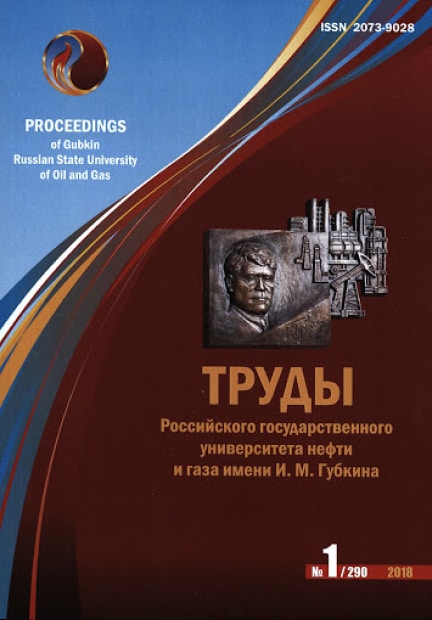Types of deposits of the Sureste basin in the southwestern part of the Gulf of Mexico
UDC: 551.24+553.98+553.63
DOI: -
Authors:
LOBUSEV M.A. 1
1,
LOBUSEV A.V. 1
1,
ANTIPOVA YU.A. 1
1,
BOCHKAREV A.V. 1
1
1 National University of Oil and Gas “Gubkin University”, Moscow, Russian Federation
Keywords: Gulf of Mexico, oil, field, structure, trap, prospective object, type of deposit, salt formations, diapirs, stocks, pillows, shafts, “drops”, caprock, “glaciers”, mushroom tops, “visors”, “hats”, lenses, wedging, discontinuous violations
Annotation:
The aim of the work is to assess the influence of various factors on the formation of structural elements and types of deposits in license blocks with Russian participation in the Sureste zone. Traps and deposits characteristic of this region are diverse: reservoir vaulted, tectonically, stratigraphically and lithologically shielded, including by the diapir core. The study focuses on traditional traps and on the types of deposits associated with salt formations, which were identified as a result of seismic studies and are an ideal “cover” for different types, reserves and age of hydrocarbon accumulations. According to the results of seismic interpretation, a significant number of promising objects have been revealed within block 10, which are divided into four main types depending on the presence of DHI, location within the mini-basins and features of the structural and tectonic structure. Approaches to the geological and geophysical assessment of objects of various types and to the most cost-effective methods are determined.
Bibliography:
1. Osobennosti stroeniya i strategiya osvoeniya yugo-zapadnoj chasti Meksikanskogo zaliva (blok 10) / M.A. Lobusev, A.V. Lobusev, Ar.V. Bochkarev, Yu.A. Antipova // Trudy Rossijskogo gosudarstvennogo universiteta nefti i gaza imeni I.M. Gubkina. – 2024. – № 4 (317). – S. 17–27.
2. Kontinental’nye okrainy Meksikanskogo zaliva. Geologiya kontinental’nyh okrain / D. Antuan, R. ml. Martin, T. Pajl, U. Brajant / pod red. K. Berka i Ch. Drejka. – M.: Izdatel’stvo “Mir”. – 1979. – T. III. – S. 28–40.
3. Konyuhov A.I. Geologicheskoe stroenie, etapy razvitiya i neftegazonosnye kompleksy bassejna Meksikanskogo zaliva // Litologiya i poleznye iskopaemye. – 2008. – № 4. – S. 425–440.
4. Belenitskaya G.A. Distribution pattern of hydrogen sulphide-bearing gas // Petroleum Geoscience: London. – 1998. – No 4. – P. 49–66.
5. Estudio Interregional “Tectónica Salina y sus Implicaciones en la exploración Petrolera” Reporte Interno / M.A. Cruz-Mercado, E. Reyes-Tovar, H.G. López-Céspedes [et al.]. Pemex Exploración y Producción, 2010.
6. Anikiev K.A. Anomal’no vysokie plastovye davleniya v neftyanyh i gazovyh mestorozhdeniyah // Trudy VNIGRI. Vyp. 233. – L.: Nedra, 1964. – 168 s.
7. Paragenez solevoj tektoniki i skoplenij uglevodorodov v yugo-zapadnoj chasti Meksikanskogo zaliva / V.A. Bochkarev, A.V. Lobusev, M.A. Lobusev [i dr.] // Zashchita okruzhayushchej sredy v neftegazovom komplekse. – 2023. – № 6 (315). – S. 17–24.
8. Bochkarev V.A., Bochkarev Ar.V. Vospolnyaemye i nevospolnyaemye zalezhi uglevodorodov // Neftepromyslovoe delo. – 2024. – № 11 (671). – S. 64–80.

